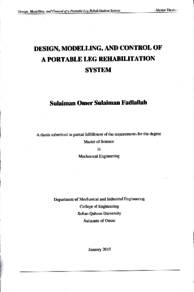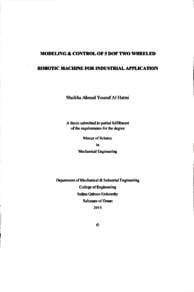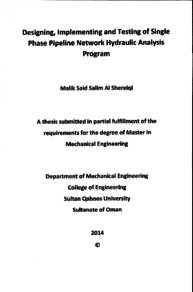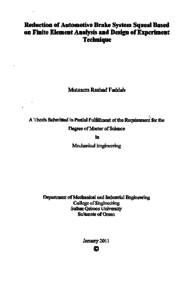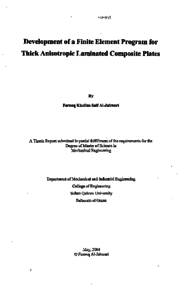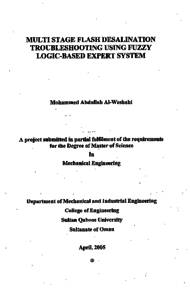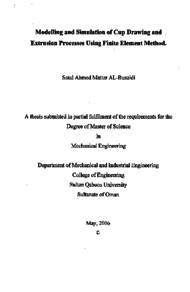Document
Design, Modelling, and Control of a Portable Leg Rehabilitation System.
Publisher
Sultan Qaboos University
Gregorian
2015
Language
English
English abstract
In this work, a novel design of a portable leg rehabilitation system is presented. The main concept of this work is to provide a portable system which allows patients with lower limb disabilities to perform leg and foot rehabilitation exercises anywhere without any embarrassment compared to other devices that lack the portability feature,
The system is designed using SolidWorks and the mechanism is identified by kinematics and dynamics analysis. In kinematics analysis, MATLAB software is used to simulate the pattern of motion of both leg and foot holders for different modes of operation provided by the system. Moving to system dynamics, SolidWorks design is transferred to ADAMS to derive a displacement-torque relation for calf and foot. The maximum knee torque is calculated around 20 N-m and 0.425 N-m for the ankle joint. As for modelling, the system is modeled by applying lagrangian modelling approach.
The linearized mathematical model derived considers calf and foot masses and moment of inertias as important parameters. Therefore, a gait analysis study is conducted to calculate the required parameters to simulate the model and to identify the required torques for both knee and ankle joints for leg swinging while sitting. The system's modes of operation are experimentally tested to identify the limitations for calf and foot orientation
LQR controller and PID controller are applied to the linearized model and compared. Although both controllers enhanced the system performance, however, due to the experienced overshoot and the time needed for the response to settle, the obtained results are not satisfactory. The PID controller optimized by Hybrid Spiral-Dynamics Bacteria-Chemotaxis (HSDBC) algorithm provides the best response with a reasonable settling time and minimum overshot. The robustness of the HSDBC-PID controller is tested by applying disturbance force with various amplitudes.
Moving to experimental validation, a setup is built to compare the mathematical model with the prototype estimated model using System Identification Toolbox of MATLAB". A significant difference is observed between both models when applying the obtained HSDBC. PID controller for the mathematical model. HSDBC-PID controller parameters are updated to adapt with the prototype model.
Member of
Resource URL
Category
Theses and Dissertations

